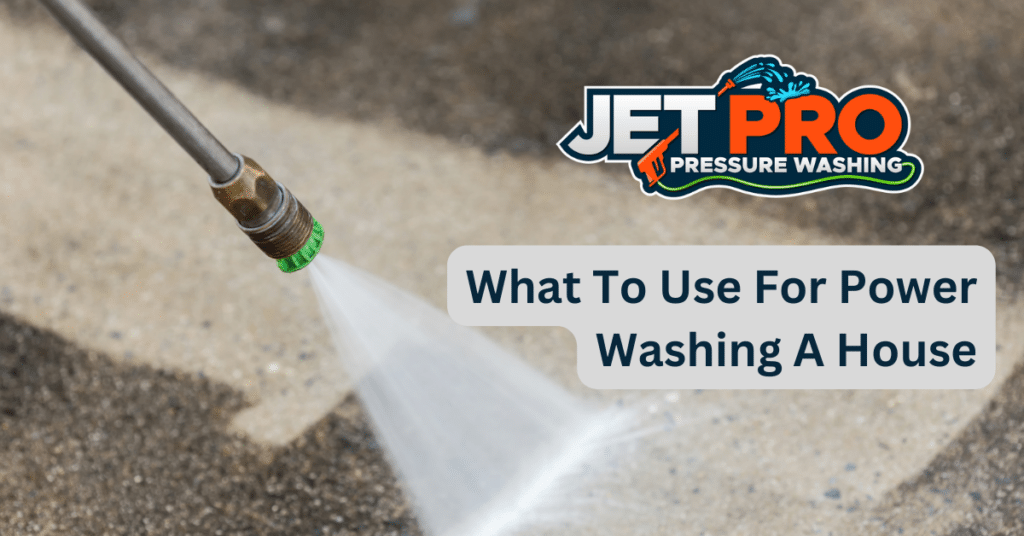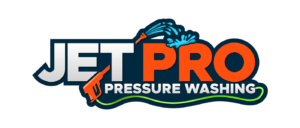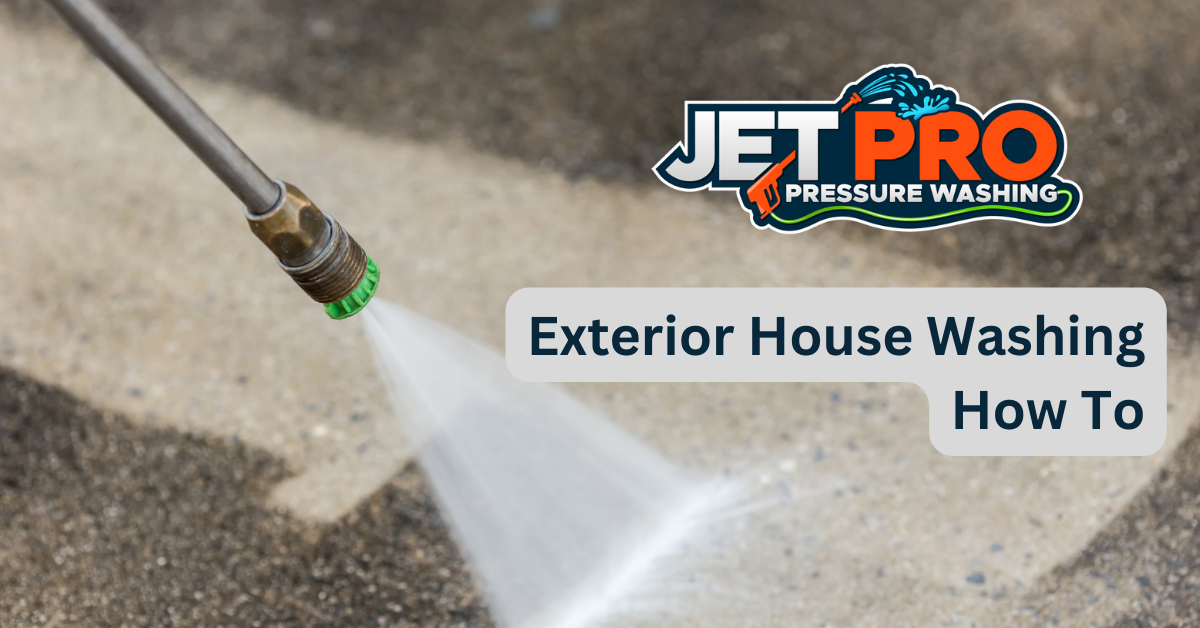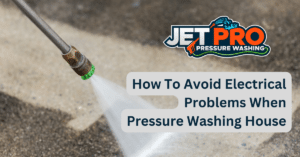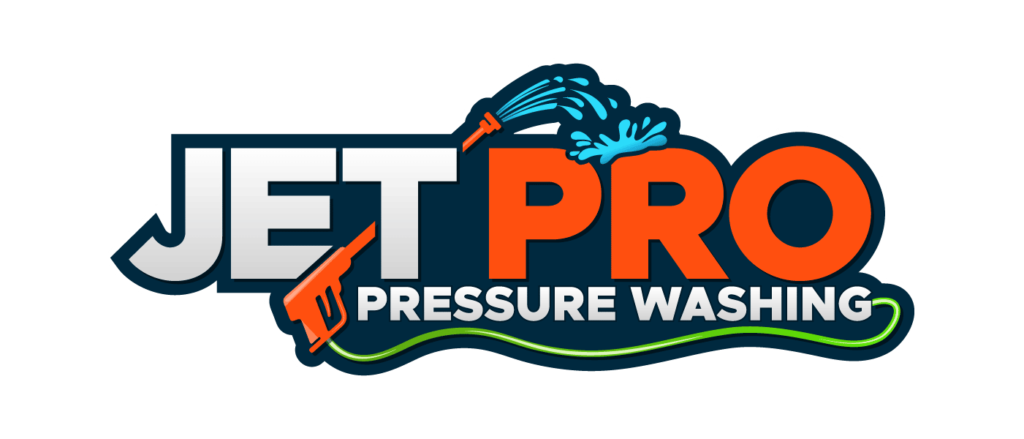Power washing a house with the help of a company that specializes in house washing is a great way to improve its appearance. However, before you start the process, it’s crucial to understand which type of power washer and cleaning solution to use, as well as the appropriate technique. To ensure the best possible outcome, it is recommended to properly prep the property by removing any furniture, plants, and other items that may obstruct the house washing experts from a reputable company.
You should also check the psi of the power washer to make sure it’s suitable for the job – learn more about how much psi for washing a house. Using the wrong psi can damage the exterior of the house. Additionally, it’s important to choose the right cleaning solution for the type of dirt and grime that needs to be removed. Finally, use the correct technique when power washing a house to avoid damaging the exterior. And if you’re looking to paint your house after power washing, be sure to check how soon after power washing can I paint my house? Don’t forget to also consider window cleaning to complete the overall look of your home.
Choose the Right Power Washer
Selecting an appropriate power washer for a home cleaning project is an important step in achieving the desired results. Understanding the differences between the types of power washers available and the job that needs to be completed can help make the right choice.
Pressure washers come in a variety of sizes and models, ranging from light-duty washers suitable for decks, patios, and siding to heavy-duty models capable of handling tougher jobs such as removing paint or cleaning concrete. Knowing the difference between these models and the right one for the job is crucial.
For example, a light-duty washer with a pressure rating of 1,500 to 1,800 PSI is ideal for the average home cleaning project. These models are easy to transport and are ideal for cleaning decks, patios, siding, and other outdoor surfaces. Heavy-duty washers with a pressure rating of 3,000 PSI or higher are best suited for tough jobs such as removing paint or cleaning concrete.
In addition to choosing the right type of pressure washer, it is important to consider the accessories and chemicals that are needed for the job. Many pressure washers come with an assortment of nozzles and brushes that can be used to clean different surfaces. Chemicals may also be necessary for tougher jobs, such as removing mold or mildew. Choosing the right combination of pressure washer, accessories, and chemicals can help make the job easier and more efficient.
Prepare the House for Power Washing
Preparation of the abode is paramount prior to commencing power washing. Before power washing, it is essential to make sure that all areas of the exterior of the house are clear of any furniture, toys, or other objects that may be susceptible to damage from the water pressure.
It is also important to protect any plants, flowers, or other vegetation that is near the house. Additionally, any window screens should be removed, and any fixtures, such as outdoor lighting, should be covered.
The surface of the house should be free of dirt and debris, and any loose paint should be removed. Any areas of the house that may have been damaged, such as wood rot, should be addressed prior to the power washing. If needed, a mild detergent should also be applied to the exterior of the house to help loosen any dirt or grime.
Power washing is a great way to bring back the beauty and luster of the exterior of a house. However, proper preparation is essential to ensure the best results. Taking the time to properly prepare the house will help to ensure that the power washing process is successful and that the job is completed safely.
Choose the Right Cleaning Solution
When power washing a house, it is important to choose an appropriate cleaning solution for the best results. The type of cleaning solution used will depend on the type of surface being cleaned. For example, a mild detergent is best for wood surfaces, while a stronger solution is better for concrete. It is also important to consider the type of dirt or grime that needs to be removed. For example, a degreaser may be needed for removing oil and grease stains.
When selecting a cleaning solution, it is important to read the label carefully to ensure that it is suitable for the surface being cleaned. It is also important to consider the environmental impact of the cleaning solution. Many cleaning solutions contain harsh chemicals that can be damaging to the environment. Therefore, it is best to choose a cleaning solution that is biodegradable and non-toxic.
It is also important to consider the cost of the cleaning solution. Some cleaning solutions can be expensive, so it is important to compare prices and choose the most cost-effective option. Additionally, it is important to consider the safety of the cleaning solution. Some cleaning solutions can be hazardous to humans and animals, so it is important to read the label and follow the instructions carefully.
Use the Right Technique
The correct technique for power washing a house is essential for achieving the best results. As such, one should take extra care to use the right approach.
The first step is to consider the surface of the house that needs to be cleaned. Different surfaces require different techniques and it is important to know how to handle each properly. For instance, a stucco surface should always be cleaned using a fan-shaped spray pattern. The same pattern should also be used on wood siding, but at a greater distance.
The second step is to use a low pressure setting for a more effective clean. This is especially important for fragile surfaces, such as wood siding. Low-pressure settings are also beneficial for avoiding damage to the paint job. Furthermore, this type of setting can also help avoid the possibility of water penetration.
Finally, it is important to use the right type of detergent for the job. It is best to opt for a milder detergent for softer surfaces, such as stucco, while a stronger cleaner is better for tougher surfaces, such as brick. Additionally, it is important to use a cleaner that is specifically designed for power washing. This will ensure that the detergent is compatible with the machine being used.
Clean Up After Power Washing
After power washing a house, it is important to clean up the area.
This includes rinsing the area with clean water, as well as disposing of the waste water properly.
Following these steps will help protect the environment and prevent water damage to the house.
Rinse the Area with Clean Water
Rinsing the area with clean water offers the opportunity to create a pristine, fresh look. To get the most out of the process, it is important to ensure that the water used for rinsing is clean and free of dirt, debris, and other contaminants.
Clean water can help to ensure that the power washing process is as effective as possible, and that the results are as pleasing to the eye as possible.
When rinsing the area, it is important to use enough water to thoroughly rinse away any remaining dirt, debris, and other contaminants that may have been missed during the power washing process. It is also important to use a powerful stream of water to ensure that the rinse is complete and that no dirt or debris is left behind.
This can help to create a clean look that will last for weeks, months, or even years.
Dispose of the Waste Water Properly
Following the rinsing of the area with clean water, it is important to dispose of the waste water properly.
To do so, the water should be collected in a bucket and poured into a clean drain. If the house is located in an area with a sewage system, the waste water can be safely released into the sewer.
In areas where the sewage system is not available, the water should be poured away from the house, preferably in an area that is away from any plants and vegetation that could be damaged by the soap and dirt.
Additionally, the waste water should never be poured directly into a body of water as it can be hazardous to aquatic life.
Frequently Asked Questions
How often should I power wash my house?
Power washing a house is like giving it a deep clean. It can be a daunting task, but it’s worth it in the end.
How often should you power wash your house? That depends on the climate and the condition of the exterior.
In areas with high humidity, power washing should be done at least once a year. In dry climates, it can be done every two to three years.
If the exterior of the house is in good condition, power washing can be done every five years.
Is it safe to power wash vinyl siding?
Power washing vinyl siding is a popular method of maintenance for homeowners, but it is important to take precautions to ensure the safety of the siding.
Pressure washers can be used to clean vinyl siding, but the pressure must be kept low enough to avoid causing damage to the material. Using the wrong pressure can cause the siding to become discolored or cracked.
It is also important to use the appropriate detergent or cleaning solution for the job. Before power washing, it is essential to check with the siding manufacturer for instructions and guidelines.
Following these precautionary steps will help ensure that the vinyl siding is safe and remain in good condition.
What kind of safety equipment should I wear when power washing?
Power washing a house is a potentially hazardous task that requires the right safety equipment in order to protect oneself from harm.
It is highly recommended to wear protective eyewear, a face mask, and waterproof gloves when power washing.
Even though it might seem like a daunting task, with the right safety gear, power washing a house can be a breeze!
Make sure to purchase the highest quality materials to ensure your safety, and remember, safety first!
Are there any environmental concerns to consider when power washing?
Power washing a house can be an effective way to remove dirt and grime, but it is important to consider potential environmental concerns.
The pressure of a power washer can be damaging to some surfaces, such as wood, and the detergents used in the cleaning process could potentially pollute the surrounding environment.
To minimize the environmental impact of power washing, use a low pressure setting, use biodegradable detergents, and avoid washing near bodies of water.
Additionally, it is important to properly dispose of any wastewater from the power washing process.
Are there any areas of the house that I should not power wash?
When power washing a house, it is important to be aware of certain areas of the home that should not be subjected to the high pressure of the washer.
These areas include any wood or siding, windows or frames, and any areas around electrical wiring or outlets.
Additionally, if the home has any loose or peeling paint, it is important to avoid power washing that area as the high pressure can make the paint come off and create a messy situation.
Conclusion
Power washing a house is an effective way to restore its exterior to its original luster. Statistics show that power washing can increase a home’s value by up to 15%.
To get the most out of this process, it is important to select the right power washer, prepare the house for washing, choose the right cleaning solution, and use the right technique. Once the power washing is complete, it is important to clean up the area.
With careful preparation and exact technique, homeowners can expect to see a dramatic improvement in their home’s appearance. Power washing is a cost-effective way to increase a home’s value and make it look like new again.

